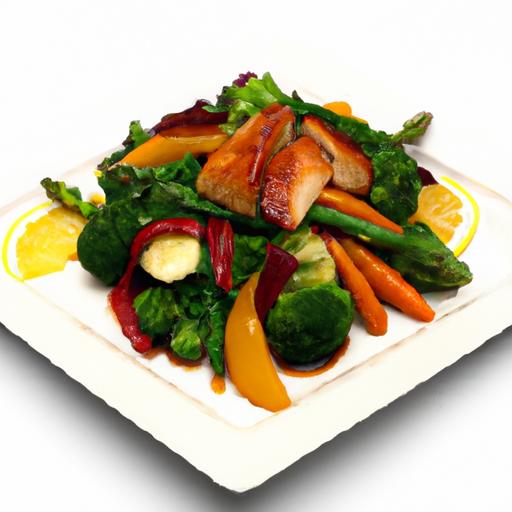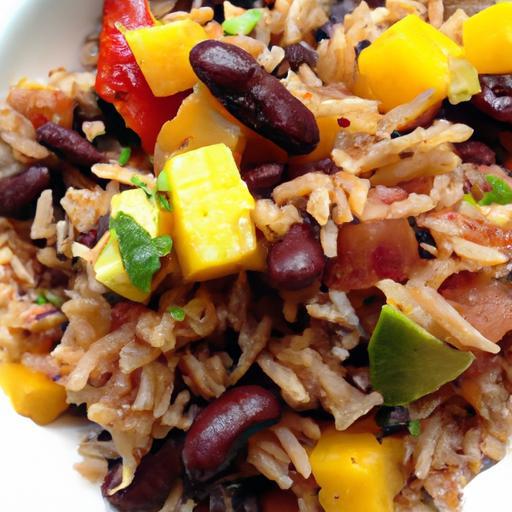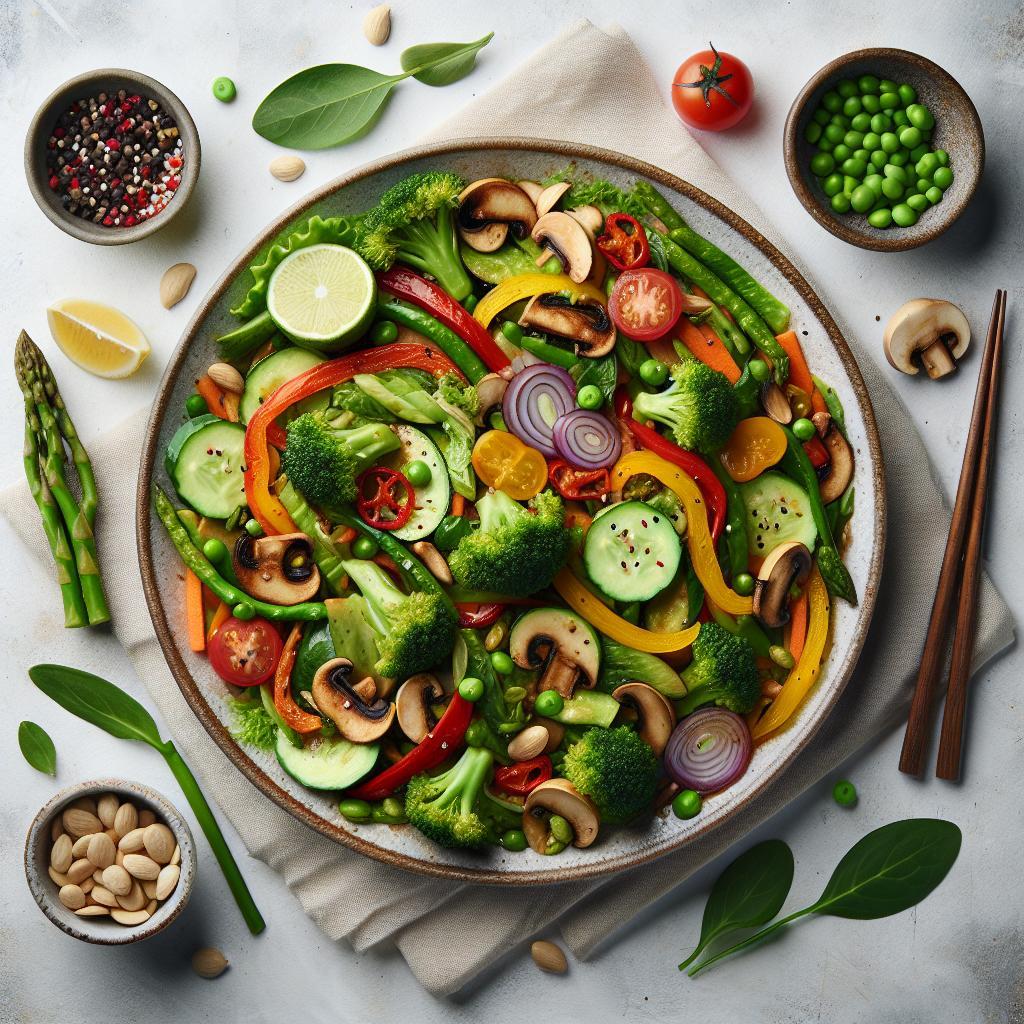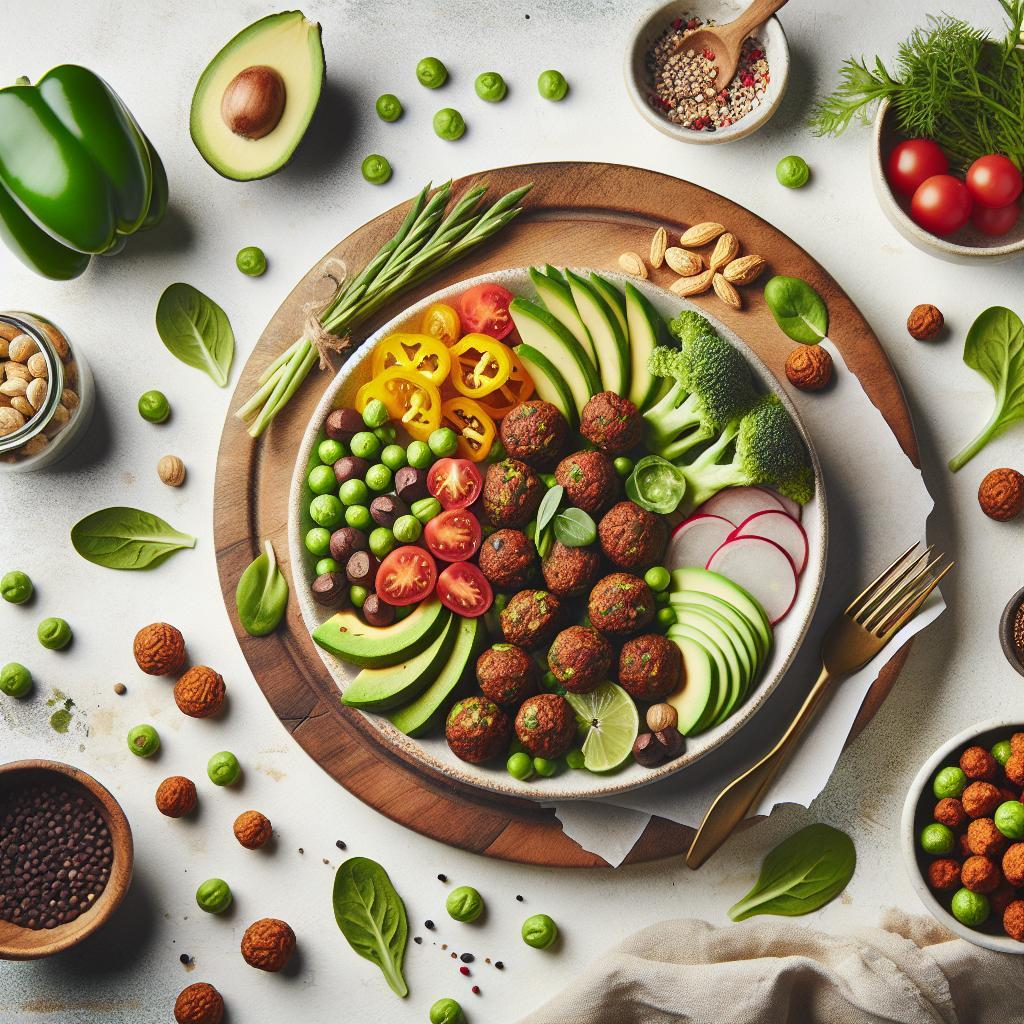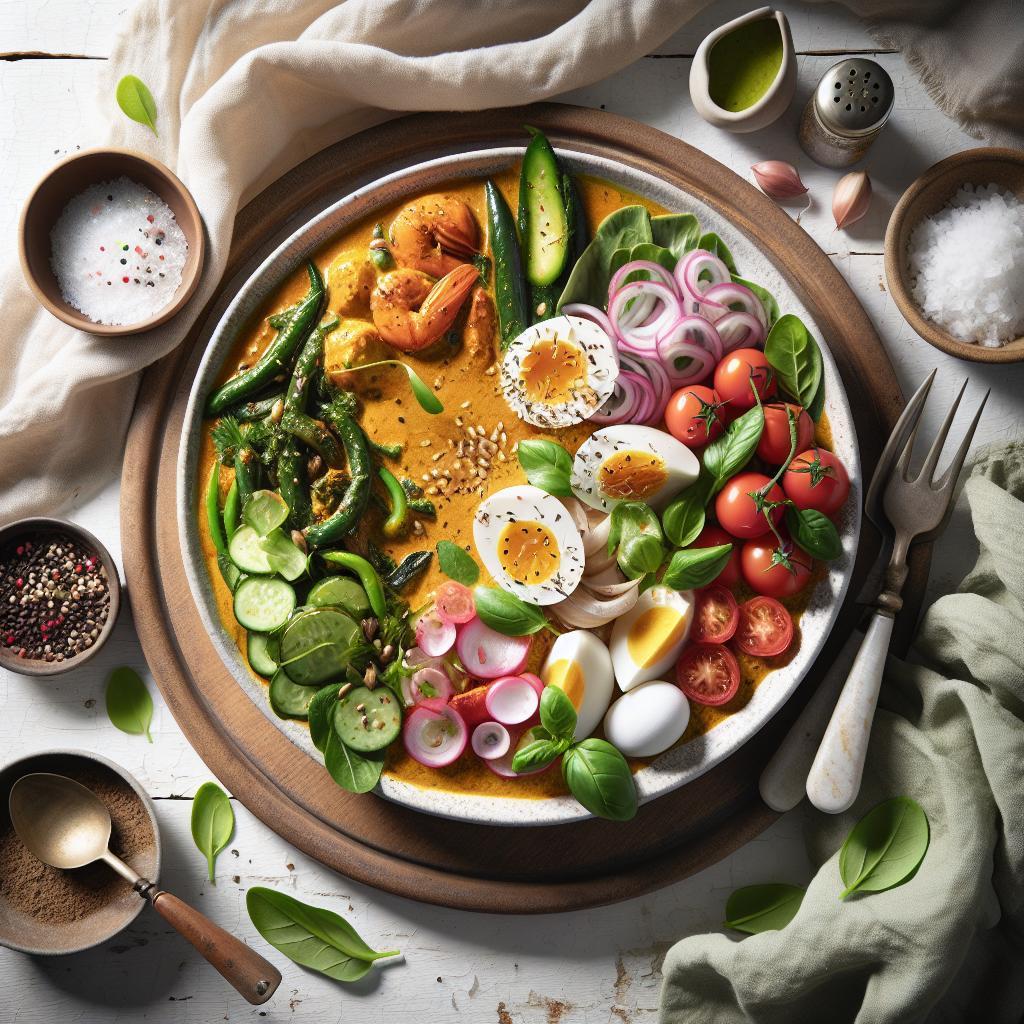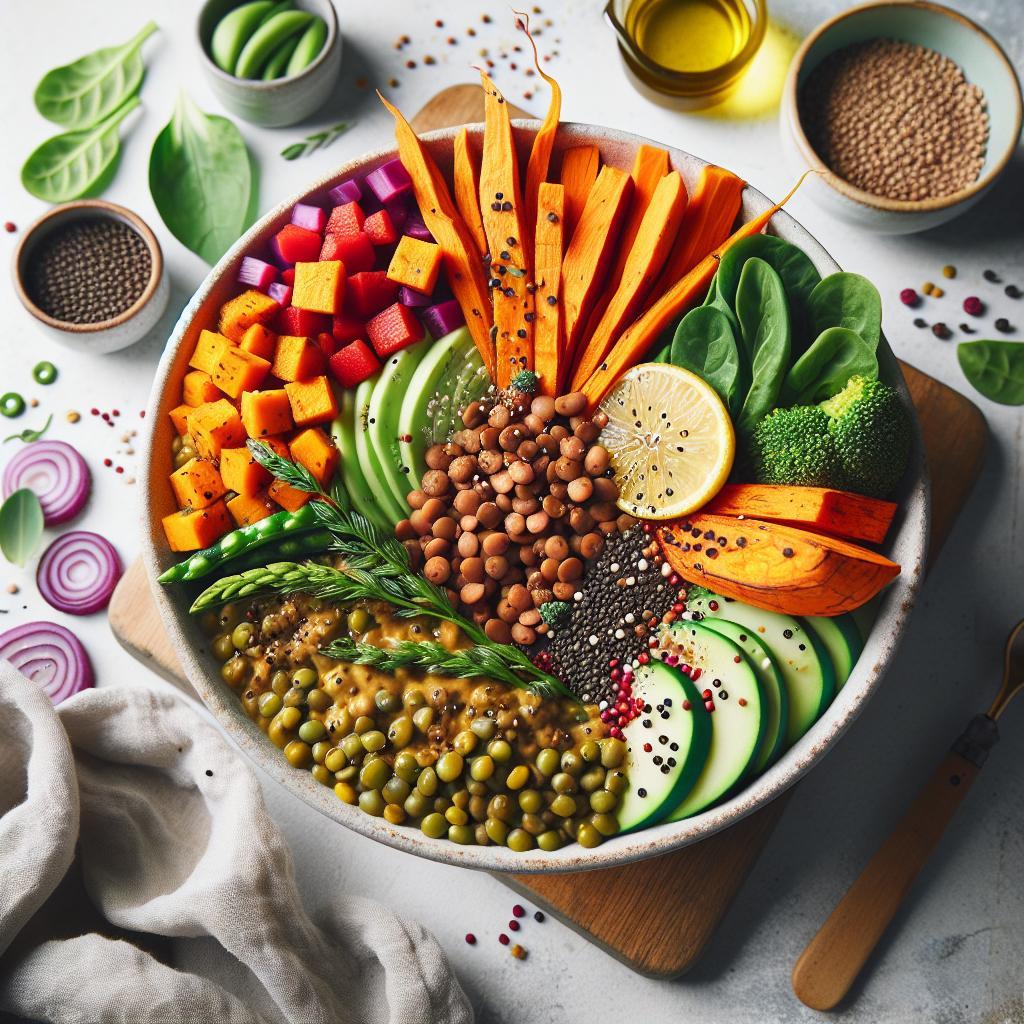Imagine inviting a steadfast carnivore to a vegetarian feast-a vibrant spread of colors, textures, and flavors that might seem foreign to their meat-loving palate. Convincing someone whose culinary compass points firmly toward steak or chicken to embrace a plant-based banquet can feel like an adventurous challenge. But with creativity, understanding, and a sprinkle of culinary magic, it’s entirely possible to transform skepticism into delight. In this article, we’ll explore clever strategies and mouthwatering recipes designed to win over even the most devoted meat enthusiast, proving that a vegetarian feast can be as satisfying and irresistible as any carnivorous indulgence.
Convincing a carnivore to enjoy a vegetarian feast begins with a keen understanding of what flavors and textures appeal to meat lovers. The key is to master bold, smoky, and umami-rich profiles that replicate the hearty satisfaction of meat without sacrificing freshness or vibrancy. By skillfully incorporating protein-packed ingredients such as lentils, mushrooms, and smoked tempeh, vegetarian dishes can offer the depth and heft that carnivorous palates crave. When these thoughtfully crafted recipes are styled with rustic, colorful plating and garnished with vibrant herbs and textures, they transform into a visual feast that even the most steadfast meat enthusiast cannot resist.
Prep and Cook Time
Preparation: 20 minutes | Cooking: 35 minutes | Total Time: 55 minutes
Yield
Serves 4 hearty portions
Difficulty Level
Medium – perfect for cooks comfortable juggling several ingredients and techniques with ease.
Ingredients
- 1 cup dried green or brown lentils, rinsed and drained
- 2 cups vegetable broth, low-sodium
- 200g smoked tempeh, diced
- 1 large cremini mushroom, finely chopped (for umami depth)
- 1 small red onion, finely diced
- 2 cloves garlic, minced
- 1 tbsp soy sauce or tamari for gluten-free option
- 1 tbsp tomato paste
- 1 tsp smoked paprika
- 1/2 tsp ground cumin
- 1/4 cup chopped fresh parsley plus extra for garnish
- 2 tbsp olive oil
- Salt and freshly ground black pepper, to taste
- Optional: Crumbled smoked vegan cheese or nutritional yeast for extra savoriness
Instructions
- Cook the lentils: In a medium saucepan, combine lentils and vegetable broth. Bring to a boil, then reduce heat and simmer gently for 20-25 minutes until tender but not mushy. Drain any excess liquid and set aside.
- Sauté aromatics: Heat olive oil in a wide skillet over medium heat. Add diced red onion and minced garlic. Sauté until fragrant and lightly translucent, about 3 minutes.
- Add mushrooms and tempeh: Stir in finely chopped cremini mushrooms and diced smoked tempeh. Cook for 7-8 minutes, stirring occasionally, until mushrooms release moisture and tempeh browns slightly.
- Enhance flavor: Mix in tomato paste, soy sauce, smoked paprika, and cumin. Sauté for another 2 minutes, allowing the spices to bloom and coat the ingredients.
- Combine lentils: Add the cooked lentils to the skillet. Stir thoroughly to marry the flavors. Season with salt and pepper to taste. Cook for 3-4 minutes to heat through, stirring gently.
- Finish with fresh herbs: Remove from heat and fold in the chopped parsley for a fresh burst of color and flavor.
Chef’s Notes
- Make-ahead tip: This dish improves in flavor after a few hours or overnight in the fridge, making it an excellent option for meal prepping.
- Texture adjustment: For a heartier bite, pulse half the mixture in a food processor before combining with the rest for a “mince”-like consistency reminiscent of ground meat.
- Ingredient swap: Tempeh can be replaced with smoked tofu or seitan, depending on availability and preference.
- Boost richness: Gently fold in vegan smoked cheese or sprinkle nutritional yeast just before serving for a cheesy, smoky hit that satisfies deeply.
Serving Suggestions
Plate this hearty lentil and tempeh sauté over a bed of creamy mashed potatoes or roasted garlic polenta. Drizzle with a touch of tangy balsamic reduction and garnish liberally with fresh parsley and cracked black pepper. Add roasted seasonal vegetables like asparagus or carrots on the side to balance the meal visually and nutritionally. For an interactive family-style experience, offer warm crusty bread to scoop up every flavorful bite.
| Nutrient | Per Serving |
|---|---|
| Calories | 340 kcal |
| Protein | 22 g |
| Carbohydrates | 30 g |
| Fat | 10 g |

For more meat-inspired vegetarian recipes, check out our Vegetarian Recipes for Meat Lovers article. Also, explore the depth of umami flavors with The New York Times’ guide to smoking foods.
Q&A
Q&A: How to Convince a Carnivore to Enjoy a Vegetarian Feast
Q1: Can a true meat lover really enjoy a vegetarian meal?
Absolutely! The key is to rethink vegetarian food not as “meatless” but as a vibrant tapestry of flavors, textures, and colors. When done right, vegetarian dishes can be just as satisfying and exciting as any carnivorous feast.
Q2: What’s the first step in winning over a carnivore’s palate?
Start by avoiding the “rabbit food” stereotype. Serve hearty, bold dishes that showcase umami-rich ingredients like mushrooms, roasted root vegetables, smoked cheeses, or even plant-based meat alternatives. A well-prepared vegetarian meal can bring out intense, savory notes that intrigue even the most devoted meat eaters.
Q3: How important is presentation in wooing a carnivore?
Very! We eat with our eyes first. A beautifully plated vegetarian feast filled with vibrant colors and appealing textures signals care and indulgence. Think caramelized cauliflower steaks, stuffed peppers bursting with quinoa and spices, or a rich, creamy risotto topped with toasted nuts and fresh herbs.
Q4: Can you incorporate familiar flavors to ease the transition?
Definitely. Use flavors and seasonings that a carnivore already loves-smoky BBQ spices, garlic and herb blends, or rich, cheesy finishes. Incorporating comfort-food vibes, like loaded vegetarian nachos or veggie-packed lasagna, helps bridge the gap from meat to plant.
Q5: What role do sauces and dips play?
A huge one! Zesty, creamy, or spicy sauces elevate any dish. Think tangy chimichurri, garlic aioli, or a robust tomato relish. These add layers of complexity and make every bite exciting, encouraging a carnivore to dive right in.
Q6: How do you address protein concerns?
Highlight protein-rich ingredients such as lentils, chickpeas, tofu, tempeh, nuts, and seeds. Emphasize that a vegetarian feast can be just as nourishing as a meat-centric meal, sometimes more so, with balanced nutrition and plenty of energy.
Q7: Is it better to go gradual or all-in at once?
Tread gently if they’re skeptical. Start with a few vegetarian sides alongside their favorite meats, then gradually introduce fully vegetarian meals. Over time, their taste buds open up, and they begin appreciating the plants-not just as a side, but as the star of the show.
Q8: Any final tips for hosting a vegetarian feast for carnivores?
Yes! Keep the atmosphere relaxed and fun. Engage them in the cooking process, share the story behind the dishes, and focus on creating a communal, flavorful experience. When the mood is light and the food is delicious, even the staunchest carnivore can’t help but enjoy the vegetarian feast.
To Conclude
Convincing a devoted carnivore to embrace a vegetarian feast might seem like a culinary quest with no easy map. Yet, armed with vibrant flavors, hearty textures, and a sprinkle of creativity, even the staunchest meat lover can discover a new kind of deliciousness on their plate. Remember, the journey isn’t about conversion but celebration-celebrating the abundance that plants offer, the joy of shared meals, and the thrill of expanding one’s palate. So next time you set the table, think of it as an invitation to explore, to savor, and perhaps, to surprise even the most committed carnivore with a vegetarian feast they’ll happily devour. After all, every great meal begins with an open mind and a willing taste bud.